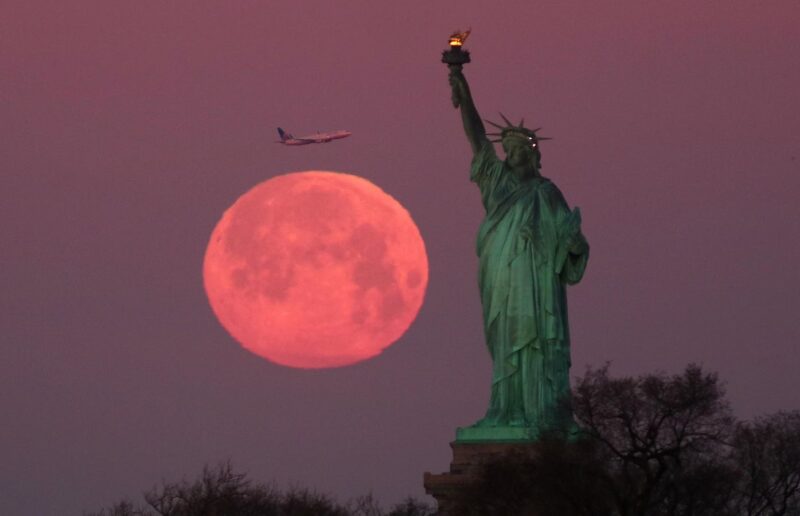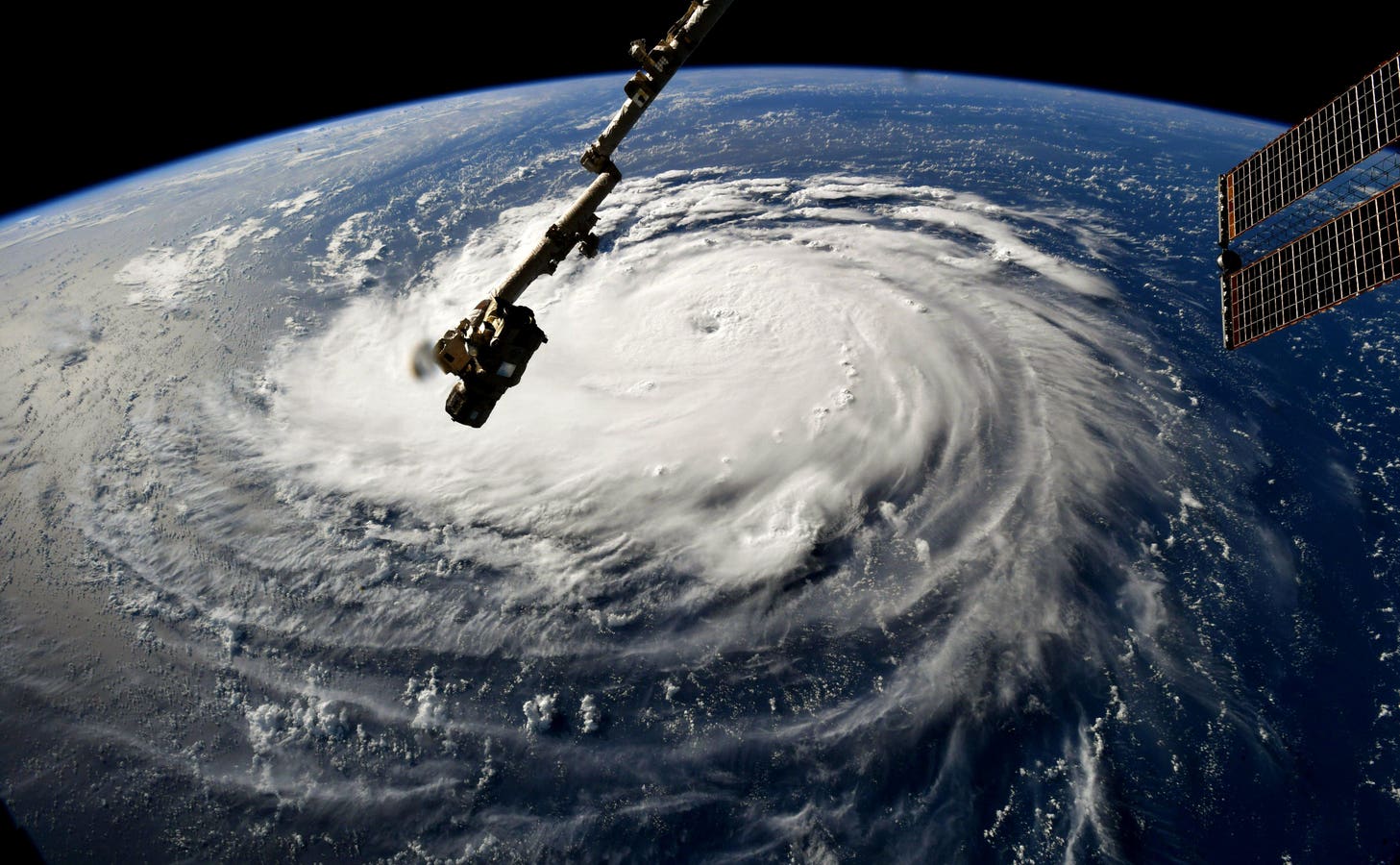The Super Snow Moon sets behind the Statue of Liberty as the sun rises on February 19, 2019, in New York City. (Photo by Gary Hershorn/Getty Images)
Corbis via Getty Images
Each month, I pick out North America’s celestial highlights for the weeks ahead (which also apply to mid-northern latitudes in the Northern Hemisphere). Check my main feed for more in-depth articles on stargazing, astronomy, eclipses and more.
November 2025 offers stargazers plenty of drama — from bright “fireballs” and a once-in-a-lifetime comet to the biggest superman since 2019. There’s also the return of iconic winter constellations to the long, dark nights and even the appearance of tiny planet Mercury. Here’s everything you need to know about the night sky in November 2025 — with key observing times and finder charts.
1. Comet Lemmon Gets Close To The Sun
When: Early November
Where: Northern sky, shifting position nightly
Comet Lemmon (C/2025 A6), the once-in-a-lifetime green comet that last visited in the seventh century, was visible through October as it passed near the Big Dipper. By early November, it will be fading as it approaches the sun — making its closest pass on Nov. 8 — but binocular users may still glimpse its diffuse greenish glow in dark northern skies.
Check my feed every day this month for a daily “comet tracker” with finder charts and tips for viewing Comet Lemmon and Comet SWAN from mid-northern latitudes. Also read How To Photograph The Green Comets, Best Stargazing Apps For Finding The Comets and 25 Dark Sky Parks In The U.S. To See The Comets.
2. A ‘Taurid Swarm’ Of Fireballs
When: Nov. 3, 2025
Where: Al-sky, radiating from Taurus in the south
The month begins with the Southern Taurids, a meteor shower with a long, broad peak that tends to include a lot of bright “fireballs” — particularly bright “shooting stars.” Expect only about five meteors per hour, but bear in mind that 2025 is a “swarm year” for the Taurids, so there might be an outburst. The cause is debris from Comet 2P/Encke.
A supermoon is seen over Turkey’s capital Ankara on February 19, 2019. A supermoon is a full moon that almost coincides with the closest distance that the Moon reaches to Earth in its elliptic orbit, resulting in a larger-than-usual visible size of the lunar disk as seen from Earth. (Photo by Aytac Unal/Anadolu Agency/Getty Images)
Getty Images
3. The Year’s Biggest Supermoon
When: Nov. 5-6, 2025
Where: Eastern horizon during dusk
The full “Beaver Moon” in November is no ordinary full moon — it’s 2025’s biggest “supermoon” full moon and the largest since February 2019. Occurring when the moon is at its closest point to Earth in its elliptical orbit, this supermoon will appear larger and brighter than usual. Rising just after sunset, it will dominate the sky, washing out faint stars but offering one of the most striking lunar displays in years. It’s full on Nov. 5, but will likely look its best on Nov. 6 simply because it rises when the sky is a little darker.
4. Northern Taurid Meteor Shower
When: Nov. 8-9, 2025
Where: Best viewed after midnight, near Taurus
Like the Southern Taurids, the Northern Taurids are few in number, but they do produce bright, slow-moving meteors that are easy to spot — and hugely rewarding to see. The Taurid showers together create a “fireball season” that makes early November a great time to go stargazing.
Orion constellation and Sirius above forest in winter sky
getty
5. Orion Returns
When: November
Where: Eastern horizon after dark
The iconic constellation Orion climbs higher each night this month, much to the delight of stargazers and amateur astronomers. Perhaps the most famous star of all, Betelgeuse — which, yes, may explode as a supernova at any time (in the next million years) — will be the most prominent. It will be followed into the night sky by Orion’s Belt, with its three unmistakable stars equidistant from each other — Alnitak (“the girdle”), Alnilam (“string of pearls”) and Mintaka (“belt”). Yup — they all mean the same thing!
6. Leonid Meteor Shower
When: Overnight on Nov. 16-17, 2025
Where: All-sky, but radiating from Leo
The Leonids are famous for past “meteor storms,” though 2025’s display will be more modest — about 15 meteors per hour under dark skies. What makes them special is their speed: Leonid meteors are some of the fastest, often leaving long, glowing trails.
Mercury will be high above the horizon before sunrise on Nov. 30, 2025.
Stellarium
7. A Morning Mercury
When: About 30 minutes before sunrise on Nov. 30, 2025
Where: Southeast horizon
The month closes with Mercury’s best morning appearance of the year. Small and elusive, Mercury can be tricky to catch, but it climbs higher above the horizon glow just enough at the end of November to be spotted — hopefully by the naked eye, and almost certainly through binoculars. With an unobstructed southeastern view, skywatchers should be able to find the closest planet to the sun shining modestly just before sunrise.
The times and dates given apply to mid-northern latitudes. For the most accurate location-specific information, consult online planetariums like Stellarium.
Wishing you clear skies and wide eyes.









